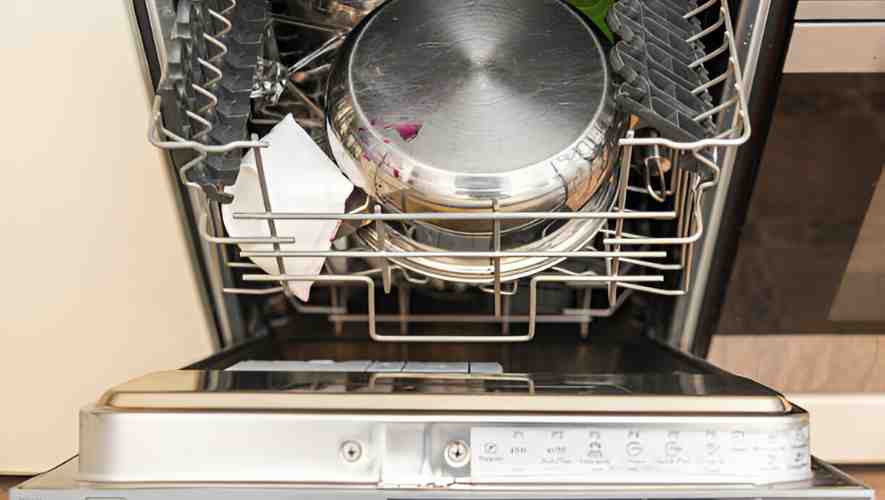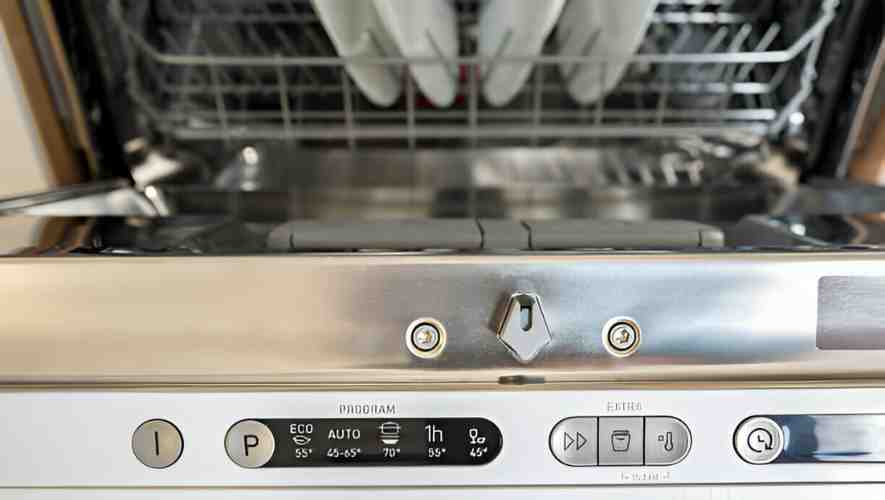Ever run into a “H2o” message flashing on your GE dishwasher? It’s like the machine’s trying to tell you something, right? Well, that “H2o error” or sometimes “H20 error” is actually the appliance’s way of saying, “Hey, I’m not getting enough water here!” This can pop up because of a few different things, like a hiccup in the water supply to the dishwasher or a glitch in how the water fill process is supposed to go during a cycle.
When this error code appears, it’s a sign that the water pressure isn’t high enough to fill the dishwasher properly. Now, before you go calling up a technician or thinking about appliance repair, there are a couple of things you can check. Look into the basics—like is the water supply working right? Is there anything messing with the pressure that should be driving water into your machine?
Understanding what causes the GE dishwasher H2o error to occur can save you time and hassle. It can help you diagnose and maybe even fix the issue yourself before you decide if it’s something that needs a professional’s touch. So, if your dishwasher is not getting what it needs, take a minute to check it out. It could be something simple messing with your cycle timer or a hint to get deeper into appliance repair.
1. What Does the GE Dishwasher H2O Error Code Mean?

Ever stared at your dishwasher flashing “H2O” and wondered what’s up? Well, you’re not alone. This error code can be a bit of a head-scratcher, but it’s actually the dishwasher’s way of signaling a specific issue. Let’s dive into what this error message really means and how you can tackle it.
Breaking Down the H2O Error Code
The “H2O” error code on your GE dishwasher isn’t just random letters and numbers—it’s a cry for help concerning water issues. This code specifically indicates that your dishwasher is having trouble with the water intake during a cycle. The primary culprits? Usually, it’s something messing with the water pressure or a problem with the fill process.
Why Water Pressure Matters
Water pressure is crucial because it affects how well your dishwasher can pull in water to start its washing cycle. If the pressure’s too low, your GE dishwasher can’t get enough water to operate correctly. This could be due to a variety of reasons like kinks in the hose, a clogged valve, or even issues further back in your home’s water supply line.
The Role of the Appliance in the H2O Error
It’s not just external factors that can trigger this error. Sometimes, the dishwasher itself might be having a hard day. Components like the water inlet valve or the appliance’s ability to gauge water level—through sensors and other internal mechanisms—play a big part in this error popping up. If these parts aren’t working right, no amount of water pressure is going to fix the issue.
How to Fix the GE Dishwasher H2O Error
When you get the H2O error, your first step is to ensure that the water supply to the dishwasher is unobstructed and at the right pressure. You might need to check the hoses and filters for blockages or see if the water valve is fully open. If everything external looks good, it might be time to dive deeper into appliance repair.
Sometimes, resetting the dishwasher can clear the error code and get things back to normal. If the problem persists, it might be a sign that a professional needs to take a look. Remember, tinkering around with internal components can be tricky, so if you’re not confident in your appliance repair skills, calling in a technician is a wise move.
Summing It Up
The GE dishwasher H2O error is essentially about water—getting enough of it, at the right pressure, and at the correct time in the cycle. Understanding this can help you diagnose and resolve issues more effectively, ensuring that your dishwasher runs smoothly and your dishes come out sparkling clean.
2. Common Reasons Your GE Dishwasher Shows an H20 Error: Let’s Fix It!

Got that pesky H20 error on your GE dishwasher? It’s a common headache for many, but don’t sweat it! Understanding why this happens can help you fix the problem and get your dishwasher back in action. Here are some typical reasons for the H20 error and how you can address them.
Water Supply Issues
One of the first things you might find when your dishwasher throws this error is a problem with the water supply. This could be anything from a kinked water hose behind the appliance to a shut-off valve that’s not fully open. Make sure there’s nothing squishing the hose and that the valve is open wide to ensure an adequate flow.
Low Water Pressure
If the water supply is good but your dishwasher still complains, check the water pressure. The dishwasher needs a certain level of pressure to operate correctly. If the pressure’s too low, the dishwasher can’t pull enough water to start the cycle properly. You might need to adjust the home’s water pressure settings or clear out any debris from the lines that could be causing a blockage.
Clogged or Faulty Inlet Valve
The inlet valve is where water enters your dishwasher, and if it’s clogged or malfunctioning, your dishwasher won’t get the water it needs. Look for signs of mineral build-up or debris. If cleaning doesn’t help, the valve might need to be replaced. This is a bit more technical, so you may want to consult a technician if you’re not comfortable doing it yourself.
Deeper Issues with Sensors or Timers
Sometimes, the issue goes deeper, beyond just the basic water supply or mechanical parts. The dishwasher has sensors and timers that monitor water levels and pressure during a cycle. If these are faulty, they could incorrectly signal an H20 error. These components require a bit more technical expertise to diagnose and repair, so this might be the time to call in professional appliance repair help.
How to Tackle These Issues
Here’s a step-by-step approach to fix the H20 error:
- Check the basics: Ensure that the water hose isn’t kinked and that the supply valve is fully open.
- Examine water pressure: Make sure your home’s water pressure is high enough for your dishwasher’s needs.
- Inspect the inlet valve: Clean or replace it if it seems to be the problem.
- Look deeper: Consider that sensors or timers might be the issue if other fixes don’t resolve the error.
Conclusion
After you’ve checked the basics and maybe cleaned out a filter or two, you should have a pretty good handle on what’s up with your GE dishwasher and that H20 error. Remember, water pressure issues or supply problems are often the heart of the matter. If your DIY fix doesn’t clear up the problem, it might be time to call in some professional appliance repair help. They can dive into more complex issues that might be beyond the typical YouTube fix tutorial.
No need to stress over a code popping up. With a bit of patience and some elbow grease, you can often sort out the issue on your own. And hey, nothing beats the feeling of fixing your own appliance! But if the error continues, don’t hesitate to reach out to a pro. After all, ensuring your dishwasher runs smoothly is all about keeping the workflow in your kitchen efficient and stress-free. Whether you solve the problem yourself or end up calling for repair, you’re one step closer to getting your GE dishwasher back in top shape!
